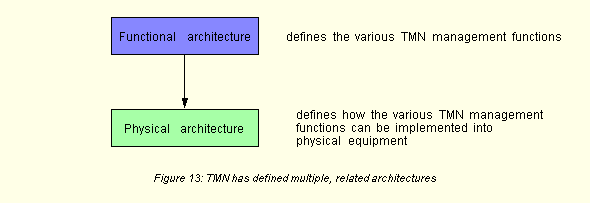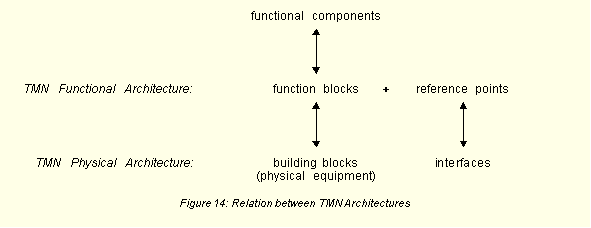Next to a functional architecture, TMN also defines a physical architecture. The latter architecture shows how TMN's functions, which were defined by the functional architecture, can be implemented into physical equipment. TMN's physical architecture is thus defined at a lower abstraction level than TMN's functional architecture (Figure 13).

The physical architecture shows how function blocks should be mapped upon building blocks (physical equipment) and reference points upon interfaces. In fact, the physical architecture defines how function blocks and reference points can be implemented (Figure 14). It should be noted however that one function block may contain multiple functional components and one building block may implement multiple function blocks.

To avoid confusion between the functional and physical architecture, it is helpful to understand the following conventions. Names of reference points are written in lower case, names of interfaces in upper case (subscripts may be added). Reference points are drawn as small filled circles (bullets), interfaces as open circles. Function blocks are shown as big circles or ellipses, building blocks are drawn as boxes.
